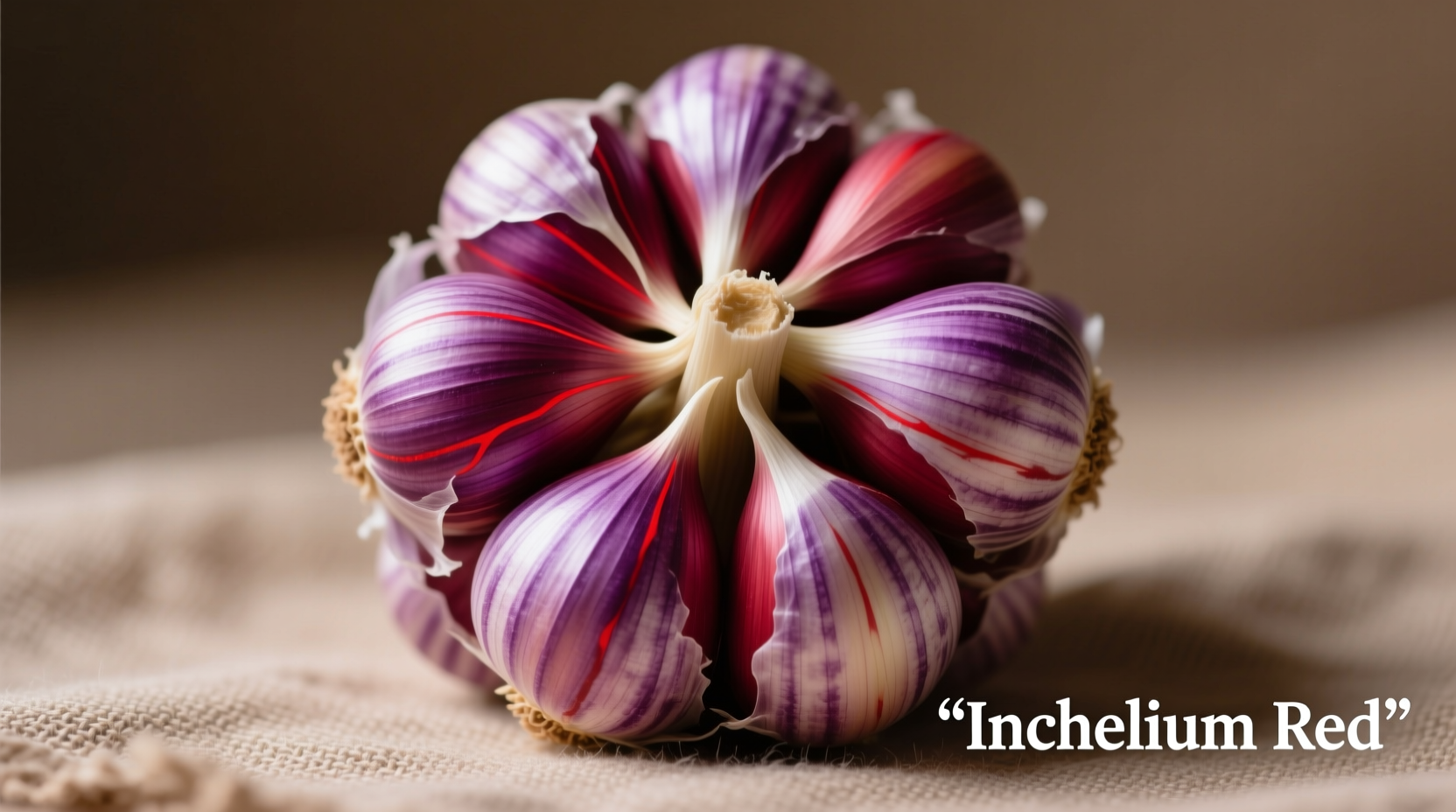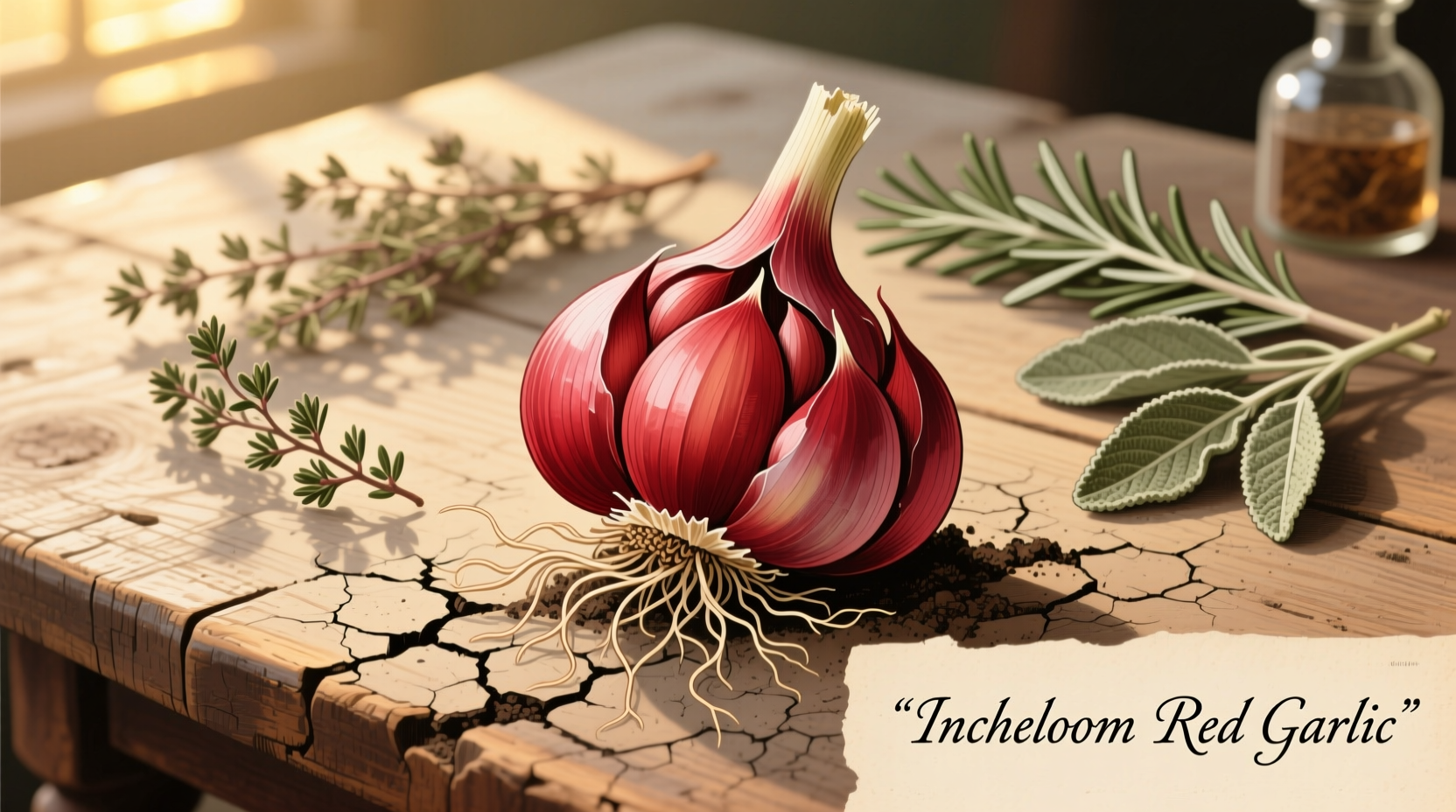When you're searching for a garlic variety that delivers exceptional flavor without overwhelming heat, Inchelium Red stands out as a top choice among culinary professionals and home cooks alike. This Washington-born softneck garlic offers a sophisticated flavor profile that's milder than many hardneck varieties yet more complex than common supermarket garlic. Its distinctive purple-striped cloves contain just the right amount of allicin to provide noticeable garlic character without dominating your dishes. Whether you're roasting whole bulbs, making garlic-infused oils, or adding fresh minced garlic to sauces, Inchelium Red provides consistent, restaurant-quality results that elevate everyday cooking.
What Makes Inchelium Red Garlic Special
Developed by the Colville Indian Tribe in northeastern Washington, Inchelium Red garlic represents a remarkable fusion of indigenous agricultural knowledge and regional terroir. Unlike many commercial garlic varieties that prioritize shelf life over flavor, this heirloom variety maintains exceptional taste quality throughout its impressive storage period. The cloves feature distinctive purple striping on a white background, arranged in multiple layers around the central stem. Each bulb typically contains 8-12 cloves with a medium size that's easy to work with in the kitchen.
What truly distinguishes Inchelium Red is its flavor evolution. When used raw, it delivers a bright, clean garlic flavor with subtle sweet notes and moderate heat that mellows beautifully when cooked. Unlike some garlic varieties that develop bitter notes when roasted, Inchelium Red transforms into a rich, nutty, almost caramel-like flavor that enhances sauces, roasted vegetables, and meat dishes without overpowering other ingredients.
| Garlic Variety | Flavor Profile | Storage Life | Heat Level | Best Culinary Uses |
|---|---|---|---|---|
| Inchelium Red | Rich, complex, slightly sweet | 8-10 months | Moderate | All-purpose, roasting, sauces |
| Rocambole (e.g., Spanish Roja) | Intense, earthy, complex | 5-7 months | High | Roasting, specialty dishes |
| Porcelain (e.g., Georgian Crystal) | Strong, pungent | 6-8 months | Very High | Hearty dishes, long cooking |
| Silverskin (e.g., California Early) | Mild, simple | 10-12 months | Low | Raw applications, garnishes |
When to Choose Inchelium Red Over Other Varieties
Understanding the context boundaries for using Inchelium Red garlic helps maximize its culinary potential. This variety shines in applications where you want noticeable garlic flavor without excessive heat. It's particularly well-suited for dishes that require longer cooking times, as it maintains its flavor integrity better than many hardneck varieties which can develop bitter notes when cooked extensively.
For raw applications like aioli, salad dressings, or fresh pesto, Inchelium Red provides sufficient garlic character without the harsh bite of some stronger varieties. When roasting whole bulbs, its natural sugars caramelize beautifully, creating a spreadable, sweet-garlic paste that's perfect for bread or mixing into mashed potatoes.
However, Inchelium Red has limitations to consider. As a softneck variety, it's less cold-hardy than hardneck types, making it less suitable for northern climates with extremely harsh winters. It also lacks the dramatic visual presentation of some purple-striped hardnecks when roasted whole, as the cloves are smaller and arranged in multiple layers rather than a single dramatic ring.

Culinary Applications and Pairing Suggestions
Professional chefs consistently reach for Inchelium Red when they need reliable garlic flavor that enhances rather than dominates their dishes. Its balanced profile makes it exceptionally versatile across culinary traditions. In Mediterranean cooking, it forms the perfect flavor base for sofrito without overwhelming the delicate balance of herbs. In Asian cuisine, it provides sufficient garlic presence for stir-fries without competing with ginger and other aromatics.
For home cooks, Inchelium Red simplifies recipe execution because it's more forgiving than stronger varieties. When making garlic bread, use 2-3 cloves minced fine for every 4 servings—this provides robust flavor without leaving you with garlic breath that lingers for hours. For roasted vegetables, toss 4-5 whole unpeeled cloves with your vegetables; they'll roast to creamy perfection alongside your main ingredients.
One professional technique worth adopting: when making garlic-infused oil, gently heat Inchelium Red cloves in olive oil just until they become fragrant (about 140°F/60°C), then remove from heat. This extracts maximum flavor without the risk of botulism associated with higher-temperature infusions. The resulting oil works beautifully as a finishing touch for soups, grilled vegetables, or bread dipping.
Growing and Sourcing Inchelium Red Garlic
Originally developed by the Colville Indian Tribe in the early 20th century, Inchelium Red garlic has gained popularity among specialty growers due to its excellent storage qualities and superior flavor. Unlike many heirloom varieties that struggle in commercial production, Inchelium Red adapts well to various growing conditions while maintaining its distinctive characteristics.
If you're interested in growing your own, plant individual cloves 2 inches deep and 6 inches apart in well-drained soil about 4-6 weeks before your first expected frost. Inchelium Red performs best in USDA zones 4-9 and requires consistent moisture during active growth but drier conditions as harvest approaches. Harvest when about 40% of the leaves have turned brown, typically in mid to late summer.
For those who prefer to purchase rather than grow, seek out farmers' markets in late summer through fall when freshly harvested garlic becomes available. Reputable online specialty food retailers like The Garlic Store and Filaree Farm offer certified seed garlic and culinary bulbs. When selecting bulbs, look for firm, heavy specimens with tight skins and minimal sprouting—these indicators suggest proper curing and storage.
Optimal Storage Techniques for Maximum Freshness
One of Inchelium Red's most valuable attributes is its impressive storage life—typically 8-10 months when properly stored. To maximize freshness, keep your garlic in a cool (55-65°F/13-18°C), dark, and well-ventilated space. A mesh bag in a kitchen cabinet away from heat sources works perfectly. Avoid refrigeration, which can cause sprouting and texture changes.
Never store garlic in oil at room temperature due to botulism risk, but you can safely freeze minced Inchelium Red in ice cube trays covered with oil for later use. For long-term preservation, consider dehydrating thin slices at 125°F (52°C) until brittle, then grinding into powder—this captures the flavor for year-round use in rubs and spice blends.
Health Benefits Supported by Research
Like all garlic varieties, Inchelium Red contains allicin and other organosulfur compounds associated with numerous health benefits. According to research published in the Journal of Nutrition, regular garlic consumption may support cardiovascular health by helping maintain healthy blood pressure levels and improving cholesterol profiles. The National Center for Complementary and Integrative Health notes that garlic shows promise for immune system support, though more research is needed on specific varieties.
What makes heirloom varieties like Inchelium Red potentially more beneficial is their higher concentration of phytochemicals compared to mass-produced commercial garlic. A study from Washington State University ("Garlic Production in Washington") documented that regionally adapted heirloom varieties often contain more diverse compounds than standardized commercial strains.











 浙公网安备
33010002000092号
浙公网安备
33010002000092号 浙B2-20120091-4
浙B2-20120091-4